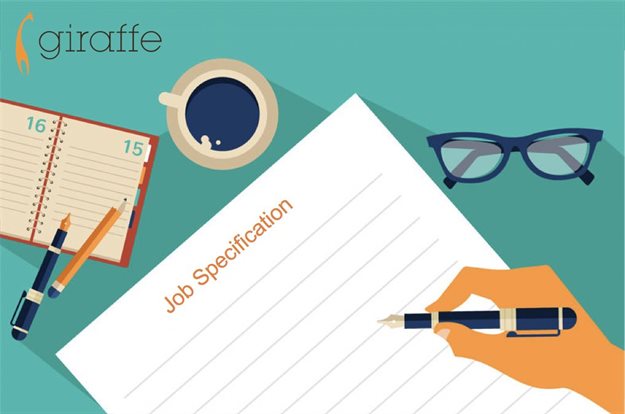
Writing a good job description can save employers time when it comes to screening applicants. Clear and compelling job descriptions are particularly important for small businesses that don’t have the resources or capacity to sort through thousands of CVs.
At Giraffe we have seen it all in terms of job descriptions - both good and bad - and we have identified clear principles that help to attract the best applicants and repel the wrong ones.
Knowing the difference between must-haves and nice-to-haves is key to drafting a good job description. Employers have an idea of the perfect candidate but often this picture involves a laundry list of many nice-to-haves over and above the essential requirements. For example, in entry-level roles, matric is often a minimum requirement but additional qualifications or experience are preferred. It is best to distinguish what is nice to have from what is non-negotiable. Clearly stating minimum requirements can reduce applications from the wrong candidates.
Keep it brief! Only include the most relevant information and avoid using jargon. Stick to what candidates need to know and avoid ambiguity. Use of headings and bullet points helps to structure the spec and highlight only the most important points. For example, a paragraph describing the role and including the necessary skills and experience as well as required qualifications will be less clear than breaking this information into a list of key bullet points. Remember that there will be opportunity in the interview process to give applicants further detail; the job description is to help candidates determine their own suitability.
It is important to be realistic when determining requirements for a role. For example, a candidate applying for an entry-level role will most likely not have their own vehicle and so it would be unrealistic to state that as an essential requirement. Similarly, if the role pays a low basic salary, expecting applicants to have many years of experience would be unrealistic.
Employers must have a good understanding of the day-to-day reality of the jobseeker - particularly when hiring for medium-skilled roles (those that pay between R4k and R20k per month). Employers should draft job descriptions that take jobseekers’ challenges into account.
For example, many South Africans rely solely on taxis for transport. Taxi schedules can impact feasible working hours for some candidates. Staff required to work shifts or long hours may not have access to public transport at these times. If the role can accommodate flexible hours to make the commute more convenient then it should be stated in the spec.
Make the role sound attractive to apply for. Remember that medium-skill roles are accessible to most South Africans and are often highly competitive with small differences in requirements and pay. Roles in this space compete with each other aggressively so your job spec needs to encourage the best candidates to apply for your role instead of a similar job at another company. Aside from competing on salary, employers can offer performance bonuses, travel allowances and other non-monetary perks to stand out.
Whilst the right candidates need to be attracted, unsuitable candidates also need to be repelled. Be up-front about any potential negative aspects of the role - such as night shifts or weekend work. For example if the role involves night shifts then candidates with children may not apply because they know upfront that they will be unable to work at night, whereas the same job may be ideal for a candidate who is studying part-time.
In some cases, certain requirements can discriminate against candidates unfairly by listing requirements not directly linked to performing the job. For example, a job spec that asks for a candidate that is fluent in Afrikaans can exclude candidates purely based on the fact that Afrikaans isn’t their first language. Make sure your requirements are necessary to perform the job to avoid discriminating by mistake. Employment Equity (EE) roles are a case particularly relevant in South Africa where a company is looking for specific candidates and this should be stated upfront so that candidates that do not fall into that category do not apply. This frees candidates up to apply for roles relevant to them and saves recruiters from sorting through irrelevant applications.
